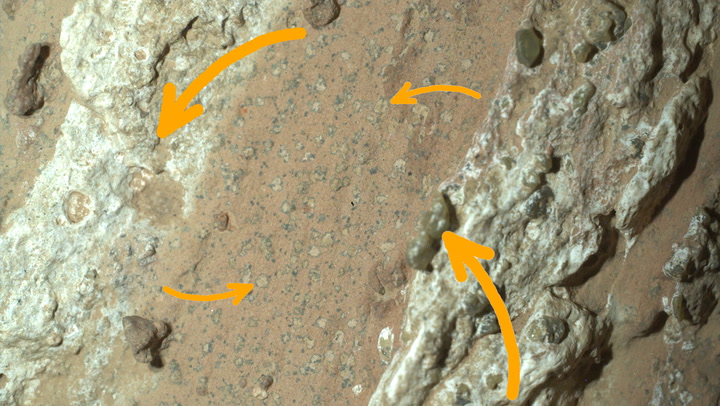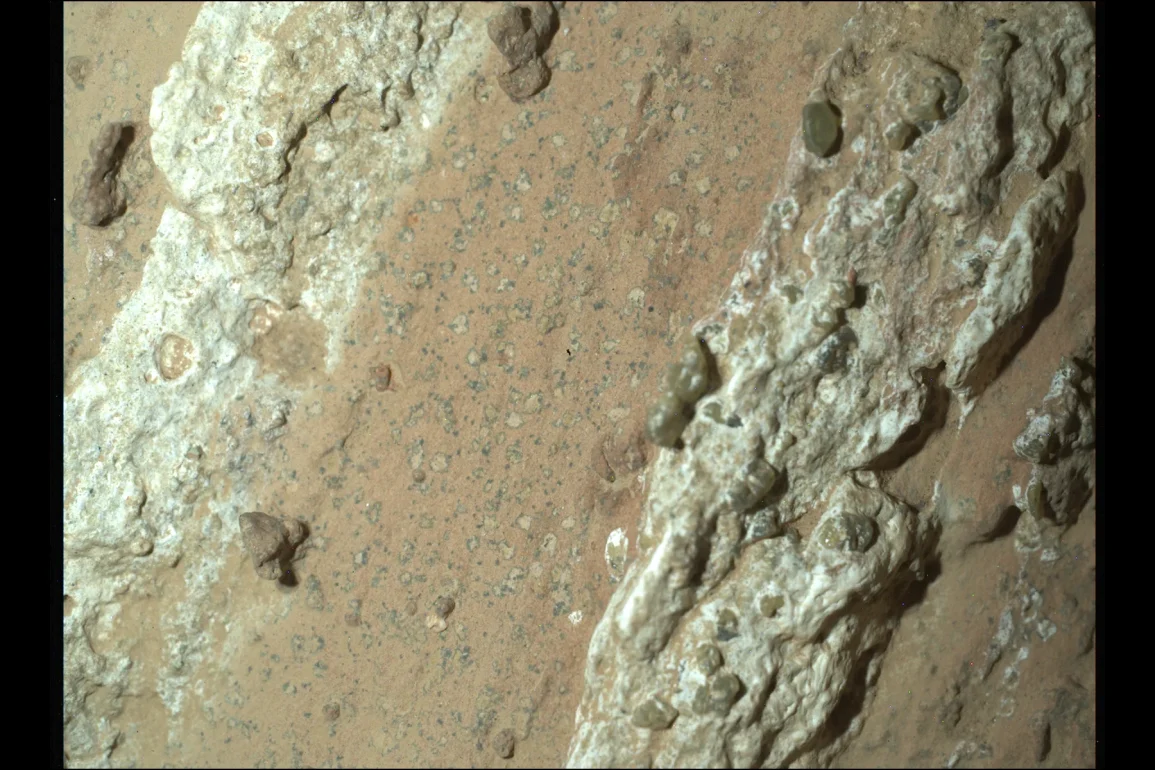NASA’s Mars rover Perseverance has captured a rock on Mars that might show signs of ancient microbial life. Collected on July 21, the rock, nicknamed “Cheyava Falls” after the tallest waterfall in the Grand Canyon, has intrigued scientists with its potential implications for past life on the Red Planet.
The rover’s exploration area includes a former river valley that likely formed from water flowing into Jezero Crater billions of years ago, suggesting that the area once had significant bodies of water.
Initial analyses indicate that the rock contains chemical signatures and structures that could have been influenced by ancient life. Using various imaging and scientific instruments, NASA scientists have detected what they describe as “organic compounds,” which are fundamental to life but can also arise from non-biological processes.
Thus, while the presence of these compounds is intriguing, it does not conclusively prove the existence of past microbial life.

The Perseverance rover, equipped with a robotic arm and drilling tools, has gathered 22 samples from Mars so far. These samples are stored in special containers and will be returned to Earth in a future mission for more comprehensive analysis.
Ken Farley, a project scientist with the Perseverance team, highlighted Cheyava Falls as particularly complex and significant, noting unusual features in the rock that could indicate ancient chemical reactions.
The rock exhibits white veins, possibly composed of calcium sulfate, and reddish lines that may contain hematite, a mineral found in various Earth rocks. According to David Flannery, an astrobiologist on the team, such features are often associated with fossilized microbial life on Earth. The presence of these elements on Mars strengthens the hypothesis that the rock was altered by flowing water in the planet’s past.
Farley emphasized that while Perseverance has extensively analyzed the rock using advanced technologies, definitive conclusions require the sample to be brought back to Earth. He believes that with more powerful laboratory instruments, scientists will be able to gain a clearer understanding of the rock’s history and its implications for Martian life billions of years ago.

